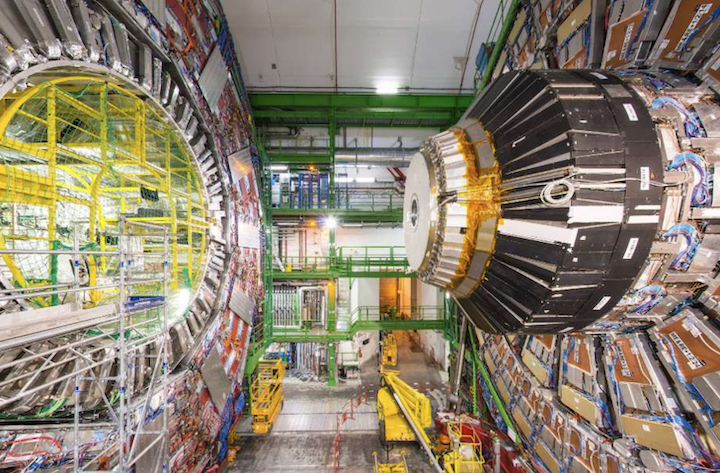In the landscape of modern physics, the concept of quantum fields pervades our understanding of the subatomic realm, asserting that they form the bedrock of all matter and energy. However, a thought-provoking inquiry arises: are these quantum fields at rest? The answer navigates through intricate layers of theoretical nuance, promising to shift our perspective on what constitutes reality.
At the heart of quantum field theory (QFT) lies the notion that particles are merely excitations of underlying fields permeating the universe. This concept radically departs from classical physics, where particles are treated as discrete entities. Instead, in the quantum paradigm, a particle like an electron is viewed as an excitation in the electron field, just as ripples signify disturbances in a pond. Consequently, one might wonder if these fields, foundational yet ubiquitous, experience a state of rest or dynamic motion.
The inquiry into whether quantum fields are at rest necessitates a closer examination of the vacuum state. The quantum vacuum is not merely an empty void; it brims with fluctuations due to the uncertainty principle. These fluctuations imply that even in a “ground state” — often misconstrued as a state of rest — the fields are never entirely at peace. They manifest brief excitations that pop in and out of existence, encapsulating the essential dynamic nature of the vacuum. Thus, one could argue that quantum fields do not rest but persist in a state of perpetual vibrancy.
Moreover, when we dissect the notion of rest in quantum fields, we must consider the implications of Lorentz invariance. This principle underpins the framework of QFT, asserting that the laws of physics remain invariant regardless of the observer’s state of motion. Consequently, could it be that the appearance of rest is merely a feature of our perceptual vantage point rather than a fundamental property of the fields themselves? Here, rest becomes a relative concept, which challenges traditional definitions. For an observer experiencing acceleration, the fields may appear to oscillate, whereas in another frame, they may manifest a semblance of stillness.
Further complicating this discourse are the implications of spontaneous symmetry breaking. This phenomenon occurs when a system’s ground state does not exhibit the symmetry of its governing laws. In such scenarios, the fields adopt a non-zero vacuum expectation value, potentially indicating a form of “rest” wherein the field has settled into a stable configuration. However, this state can also signify an underlying dynamism, as evidenced by phase transitions observed in various physical systems. Here, rest is spectral — an ephemeral stability amidst persistent fluctuations.
Additionally, the inquiry invites a consideration of gauge fields in the context of quantum electrodynamics and chromodynamics. These gauge fields facilitate the interactions among charged particles, and while one may depict them as static in specific scenarios, they fundamentally remain subject to continuous transformations. The concept of “rest” in these gauge fields similarly oscillates between the states of potential and kinetic energy, further complicating our comprehension.
The exploration of quantum fields at rest also dovetails with discussions surrounding the interpretation of quantum mechanics. For instance, the Copenhagen interpretation posits a fundamental indeterminacy at the quantum level, suggesting that the very act of measurement collapses a field into a particular state. If quantum fields are ever at rest, would they not negate the indeterminate nature proposed by this interpretation? Engaging with alternative interpretations, like the many-worlds view, yields additional layers of complexity, where all potential states coexist, introducing a multiverse of possibilities. Such a framework negates the notion of rest; rather, it posits that every possibility is a vibrant manifestation of various possible realities.
On the other hand, contemplating the implications of the Higgs field offers a tangible avenue for investigating the concept of rest. The Higgs mechanism is pivotal in bestowing mass upon elementary particles. The Higgs field, theoretically present throughout the fabric of spacetime, is often described as “stationary” in its vacuum state. However, to adopt this view is to simplify the intricate dance of quantum fluctuations that perpetually define its existence. Even within its “rest” configuration, the Higgs field’s properties suggest a swirling vortex of activity beneath the surface, indicative of an underlying non-equilibrium state.
Moreover, one must not overlook the philosophical implications of considering quantum fields at rest. The transition from classical to quantum mechanics invites profound questions about reality, observation, and existence itself. If quantum fields are not truly at rest, this challenges the very fabric of determinism. It raises discourses surrounding the nature of being — are we to accept a dynamic reality defined by constant flux, where nothing truly stands still? Such reflections entice one to delve deeper into the philosophical ramifications of quantum physics.
In conclusion, while the notion of quantum fields at rest invites inquiries into fundamental principles, it ultimately leads to a profound realization: rest, as perceived in classical terms, may well be an illusion in the quantum world. The dynamic nature of these fields, interspersed with incessant fluctuations, heralds a rich tapestry of interactions and realities waiting to be unraveled. The quest to decipher the enigma of quantum fields not only beckons physicists but also calls upon philosophers and curious minds alike to join in the exploration of our universe’s most fundamental underpinnings. Thus, the possibilities remain vast, hinting at a universe that is anything but static, forever oscillating between states of uncertainty and excitement.












